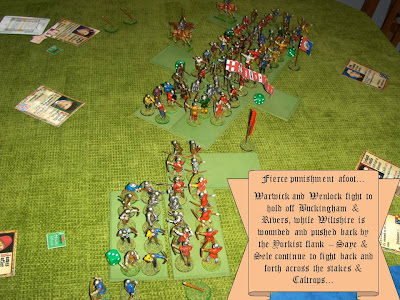I'm still progressing with the Waterloo Campaign painting in 1/72 scale, but this is clearly going to be a long-term thing. Lots of slow & tedious painting just to get things out of the way, with precious little by way of a game. Something else is needed; something to cash in on the excellent price of the 1/72 plastics, and bring more short-term rewards than the long-term 'big daddy' project of them all!
I've taken the plunge and decided to buy some others for another period I've always struggled to find a good scale to game in - the American Civil War. I've played it in DBA-games of 2mm and 15mm, but the scale I wanted wasn't really there (it was in 2mm, but I had unwisely based the 2mm on too-small bases, which makes them painfully 'fiddly', and I didn't want to invest in more just yet.) I even got some Perry 28mm figures a long, long time ago. Problem is though, that if I want to do ACW on a big scale (and let's be honest, I probably do want to do things on a big scale) then a balance has to be struck between the biggest possible figure size and the economy of fielding a large number of them on a table.
As I've covered before, the cheap price of 1/72 figures (or, more accurately, my belated realisation of it) has been a real game-changer. As such, I've bitten the bullet and placed an order online for a bunch of 1/72 ACW figures. My plan is to build things up to roughly a 1-base-per-brigade level, but each base is being done strictly on 'DBA' lines so just 4 figures are required for a unit (as compared to 10 on the big 'Waterloo' system.) This should keep the whole project strictly 'small scale' in painting terms and 'big scale' in game terms. In fact, in terms of scale it's roughly on a level with Big Battle DBA (or BBDBA, where all base-numbers are trebled.)
So, the order: I've sent off to Gladstons (a shop I found with some online searching, previously called modelkit.co.uk) for 3 boxes each of Confederate Infantry (by Italeri, who seem to do some of the best figs from what I've seen so far) and three of Union Artillery (seems there's no Italeri Confederate Artillery, as they're interchangeable. Also, most ranges only ever seem to have 2 Cannon per box as opposed to the 3 or 4 you get in Napoleonic boxes - at least I've lots of caissons for camps, etc!) I've also rounded it off with a single box of Cavalry figures. My aim is to make up the Confederate Army of Northern Virginia (ANV) in full, with the Union's Army of the Potomac to follow at a later date.
Also, what of Generals? It seems that the plastic ranges generally do the rank & file quite well, but command is a rarity. I decided that I'd need some commanders, and so resolved to also get some lead figures to go with the plastic. Although 1/72 would imply 25mm scale for a typical 6-foot man, I gathered from reading advice forums online that this tended to be a bit over-generous and looked odd. 20mm seems to be the 'go to' figure scale to combine with the 1/72 plastics. Shame I don't have any 20mm collections! After a bit of looking about for a UK-based manufacturer, I settled on Newline Designs and decided to
give them a chance. They didn't have any specific 'Generals' in figure form, but they do 'Mounted Infantry command in a slouch hat' so I figure that's near enough to modify as needed.
Last, I need bases. I used to make them myself, until it dawned on me how cheap it was to buy them from suppliers. I went to Warbases to get some, and bagged a couple of sets made from 2mm MDF. The plan is to follow the recommended basing system from DBA, which for 20/25mm means a 60mm frontage and 30mm depth for infantry. I have also got a set of 60mm x 60mm bases for the artillery and cavalry (coincidentally also the size I'm using throughout in the Waterloo set, so it'll be interesting to get a look at them.)
The plan is to base the figures right away, and paint them when mounted. This has worked pretty well for me in the past on projects like the 10mm WW2 Desert Campaign figures I bought. Sadly it's not usually possible for things like my 15mm Seven Years' War armies or my Waterloo project, as they tend to be packed with figures and therefore impossible to paint after basing. This more restrained project has only 4 infantry figures to a base, and should therefore be viable. Delivery should take place within the next few days!





















